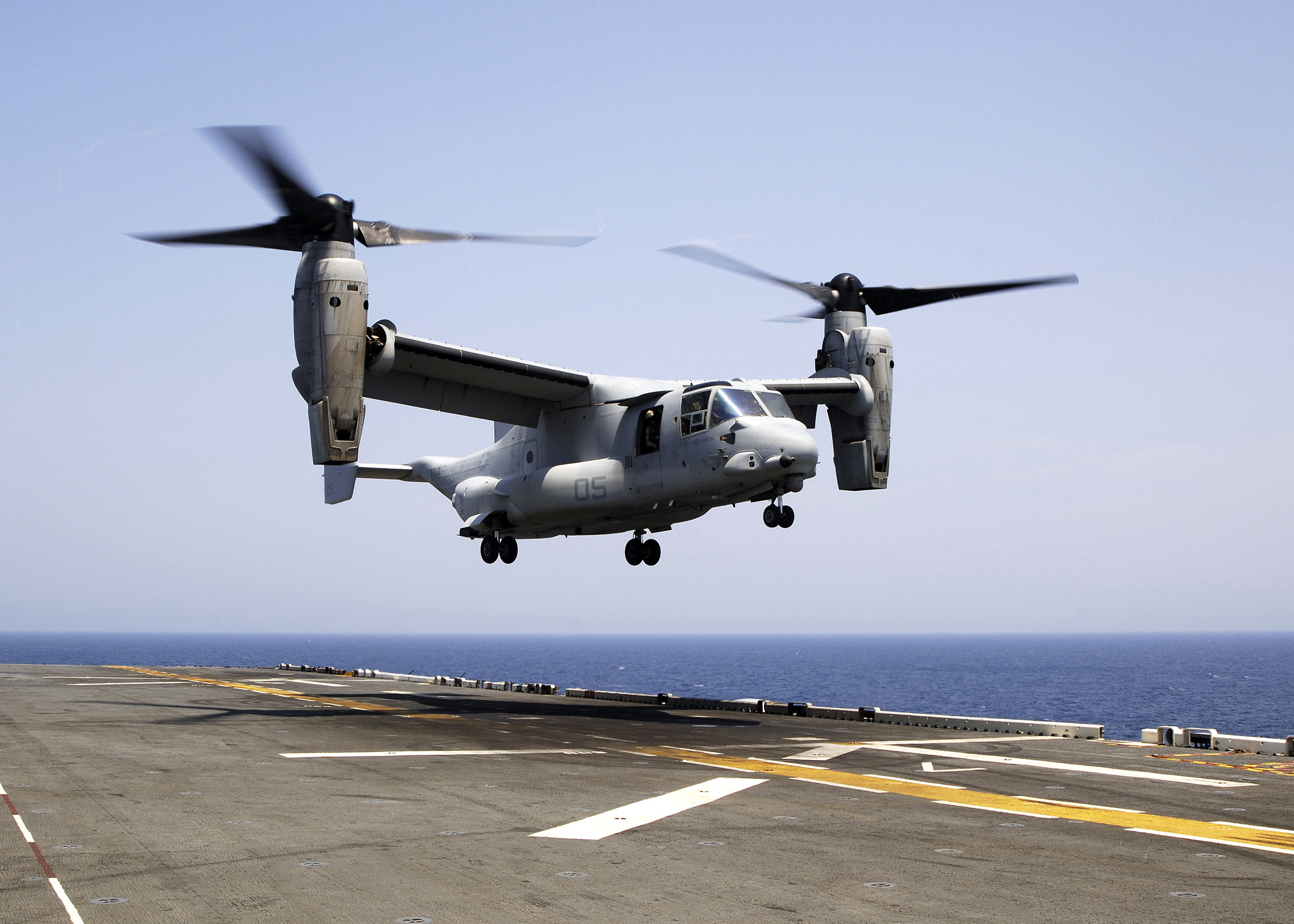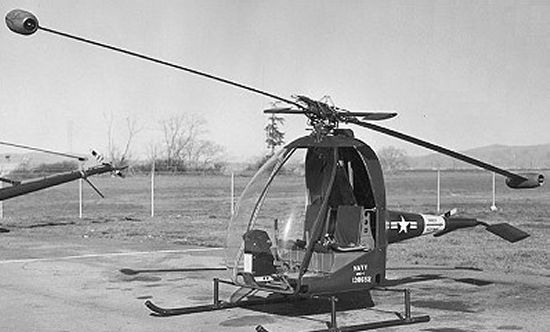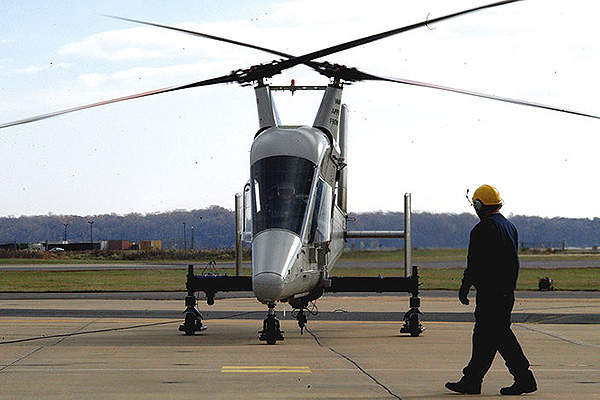So there are many different types of helicopter setups:
1: Traditional

With a single main rotor helicopter, the creation of torque as the engine turns the rotor creates a torque effect that causes the body of the helicopter to turn in the opposite direction of the rotor. To eliminate this effect, some sort of antitorque control must be used with a sufficient margin of power available to allow the helicopter to maintain its heading and provide yaw control.
2:Tandem

Tandem rotors are two horizontal main rotor assemblies mounted one behind the other. Tandem rotors achieve pitch attitude changes to accelerate and decelerate the helicopter through a process called "cyclic pitch". To pitch forward and accelerate, both rotors increase the pitch at the rear and reduce the pitch at the front (cyclic) keeping torque the same on both rotors, flying sideways is achieved by increasing the pitch on one side and reducing pitch on the other. Yaw control develops through opposing cyclic pitch in each rotor. To pivot right, the front rotor tilts right and the rear rotor tilts left. To pivot left, the front rotor tilts left and the rear rotor tilts right.
3:Coaxial

Coaxial rotors are a pair of rotors mounted one above the other on the same shaft and turning in opposite directions. The advantage of the coaxial rotor is that, in forward flight, the lift provided by the advancing halves of each rotor compensates for the retreating half of the other, eliminating one of the key effects of dissymmetry of lift: retreating blade stall. However, other design considerations plague coaxial rotors. There is increased mechanical complexity of the rotor system because it requires linkages and swashplates for two rotor systems. Also, because the rotors must rotate in opposite directions, the mast is more complex, and control linkages for pitch changes to the upper rotor system must pass through the lower rotor system.
4:Traverse:

Transverse rotors are mounted on the end of wings or outriggers perpendicular to the body of the aircraft. Similar to tandem rotors and intermeshing rotors, the transverse rotor also uses differential collective pitch. But like the intermeshing rotors, the transverse rotors use the concept for changes in the roll attitude of the rotorcraft.
5:NOTAR

Although the concept took some time to refine, the NOTAR system is simple in theory and provides an antitorque the same way a wing develops lift by using the Coanda effect. A variable pitch fan is enclosed in the aft fuselage section immediately forward of the tail boom and is driven by the main rotor transmission. To provide the sideways force to counteract the clockwise torque produced by a counterclockwise-spinning main rotor , the variable-pitch fan forces low pressure air through two slots on the right side of the tail boom, causing the downwash from the main rotor to hug the tail boom, producing lift and thus a measure of antitorque proportional to the amount of airflow from the rotor wash. This is augmented by a direct jet thruster which also provides directional yaw control, with the presence of a fixed-surface empennage near the end of the tail, incorporating vertical stabilizers.
6:Tip Jet

The main rotor may be driven by tip jets. Such a system may be powered by high-pressure air provided by a compressor. The air may or may not be mixed with fuel and burnt in ram-jets, pulse-jets, or rockets. Though this method is simple and eliminates torque reaction, prototypes that have been built are less fuel-efficient than conventional helicopters. Except for tip jets driven by unburnt compressed air, very high noise levels is the single most important reason why tip jet-powered rotors have not gained wide acceptance. However, research into noise suppression is ongoing and may help make this system viable.
7: Intermeshing/Kaman/K-max

Intermeshing rotors on a helicopter are a set of two rotors turning in opposite directions with each rotor mast mounted on the helicopter with a slight angle to the other so that the blades intermesh without colliding. This configuration is sometimes referred to as a synchropter. Intermeshing rotors have high stability and powerful lifting capability.
##8 Ducted fan

Ducted fans have between eight and eighteen blades arranged with irregular spacing so that the noise is distributed over different frequencies. The housing is integral to the aircraft's skin and allows a high rotational speed; therefore, a ducted fan can have a smaller size than a conventional tail rotor.

Yeah, I’m used to plane terms, not helicopter @MTakach
@EternalDarkness
tbh I didn't think that people would want examples (yes I thought that), but now that you mention it I will edit, and put examples, names, etc.
You could have included so much more info. For example, ducted tail rotor is called "fenestron" and it is a design develped by Sud Aviation and first used on Aerospatiale Gazelle.
@CRJ900Pilot you mean coaxial?
You forgot contra-rotating helicopters though
Yes, it’s much better now. Thanks! @MTakach
@SubXTribe the blade less helicopter is a concept not an actual form
9: Bladeless helicopter
@jamesPLANESii kinda
Does a gyrocopter count?
@Mmdben @CRJ900Pilot any better?
Good information, but impossible to read because almost every word is split along the edge. It’s also a difficult font to read, so just stick to the regular one
Amazing article you got here, But I suggest:-
1. using this photo in the NATOR section.
2. Please use this format when typing long articles to make it easy for mobile heads to read
Rather than using this format- the one you're using-
.
@randomusername I specifically like the NOTAR design, I am currently trying to "develop" a working prototype that uses the actual helicopter rotors
@randomusername same